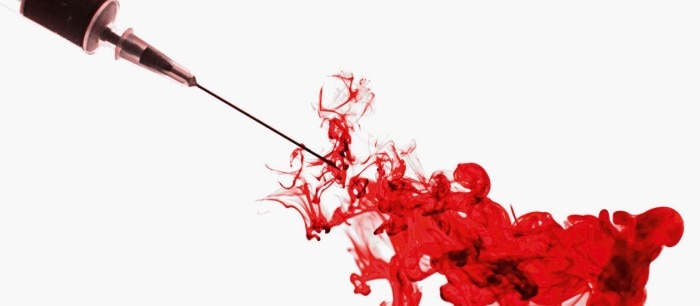MENU
MA | EUR
-
-
-
- Services pour bioprocédés
- Services pour centrifugeuse et rotors
- Services pour Mastercycler
- Services pour automates de pipetage
- Services pour congélateurs
- Services pour incubateurs
- Services pour agitateurs
- Services pour appareils de photométrie
- Service de contrôle de la température et de l’agitation
- Service pour pipette
-
-
-
-
- Services pour bioprocédés
- Services pour centrifugeuse et rotors
- Services pour Mastercycler
- Services pour automates de pipetage
- Services pour congélateurs
- Services pour incubateurs
- Services pour agitateurs
- Services pour appareils de photométrie
- Service de contrôle de la température et de l’agitation
- Service pour pipette
-
MA | EUR
-
- Centrifugeuses de paillasse
- Centrifugeuses au sol
- Centrifugeuses réfrigérées
- Microcentrifugeuses
- Centrifugeuses multi-fonctions
- Centrifugeuses haute vitesse
- Ultracentrifugeuses
- Concentrateur
- Produits IVD
- High-Speed and Ultracentrifuge Consumables
- Tubes de centrifugeuse
- Plaques de centrifugeuse
- Gestion des appareils
- Gestion des échantillons et des informations
-
- Pipetage manuel & distribution
- Pipettes mécaniques
- Pipettes électroniques
- Pipettes multicanaux
- Distributeurs et pipettes à déplacement positif
- Automates de pipetage
- Distributeurs sur flacon
- Auxiliaires de pipetage
- Pointes de pipette
- Consommables d’automatisation
- Accessoires pour pipettes et distributeurs
- Accessoires d’automatisation
- Services pour pipettes et distributeurs
Vous vous apprêtez à quitter ce site.
Veuillez noter que votre panier actuel n’est pas encore enregistré et ne pourra pas être affiché sur le nouveau site ou lors de votre prochaine visite. Si vous souhaitez enregistrer votre panier, veuillez vous connecter sur votre compte.
Sorry, we couldn't find anything on our website containing your search term.

Liquid Biopsy: Novel Methods May Ease Cancer Detection and Therapy
Découvrir les sciences de la vie
- La vie au labo
- Essay
- Santé et médecine
Breakthrough in individualized cancer treatment? US scientists are working on new methods to detect cancer in blood samples. The so-called liquid biopsy method is a promising alternative for individualized cancer diagnosis and therapy monitoring.
In industrialized countries, every third person will develop cancer in their lifetime. Cancer is the second most common cause of death in these countries, which has made it one of the key healthcare issues for decades. Scientists and medical experts around the globe are busy conducting research into new medicines and advanced methods for cancer detection and treatment, a challenging field of science. Because each instance of cancer is unique, it's not a clearly-definable disease. Cancer tumor cells are different and even the cells of a single cancer type exhibit individual characteristics. Liquid biopsy is a promising technique to set against the diverse physiological characteristics of cancer diseases.
Single blood draw for cancer testing
Traditional biopsy methods are currently the most common way to detect cancer. However, taking the tissue samples requires invasive surgery, which is not always possible to perform. Sometimes such an intervention is too exhausting for a weak patient, or the tumor is located in an unreachable part of the body. In contrast, liquid biopsy only needs a blood sample, making it much easier to carry out. In its original form, liquid biopsy is based on a determination of tumor markers from the blood. These markers are proteins that can be detected in high concentrations in certain tumor diseases. Nowadays, even malignant cells emitted into the blood stream by a tumor, and cell-free DNA scattered into the blood by dying tumor cells, can be detected.As good as the conventional way
A recent study presented at this year’s annual meeting of the American Society of Clinical Oncology demonstrates that blood tests can be an adequate non-invasive alternative to tissue biopsy. In the large-scale genomic analysis, blood samples from more than 15,000 patients and 50 different tumor types were analyzed. It was one of the largest cancer studies ever conducted. Scientists at the University of California Comprehensive Davis Cancer Center in Sacramento, California observed that the mutation patterns in circulating tumor DNA in blood samples mirror those which are identified in traditional tumor tissue biopsy.A promising alternative
Another team of scientists at the University of Washington in Seattle pursued another strategy and published their study early this year in Cell, a scientific journal. They also analyzed cell-free tumor DNA from the blood, but were not looking for mutations as described above. Instead, their novel liquid biopsy method is based on DNA packaging structures, identifying what types of cells gave rise to the cell-free DNA. In a living cell, the DNA is folded around protein cores that build up structures called nucleosomes. Every cell has a slightly different way to pack its DNA. When a cell dies, its DNA is divided between the nucleosomes and then spread out to the blood. The resulting nucleosome patterns are specific to every single cell type. This phenomenon is the basis for the new approach, which analyzes the nucleosome footprint of cell-free DNA. In healthy humans, the scientists mainly found DNA from lymph nodes and bone marrow, tissues with high cell production and death rates. The nucleosome footprint is unique in cancer patients. It can reveal the origin of the primary tumor, which is currently not found in five percent of all cancer diseases.Vital hopes
The clinical implementation of liquid biopsy is not yet widespread. However, this novel method may revolutionize cancer diagnostics and therapy. It can improve monitoring the progression of the disease, the response to therapy and the development of treatment resistances. It allows personalized therapies and eases screening procedures.
Lire moins
